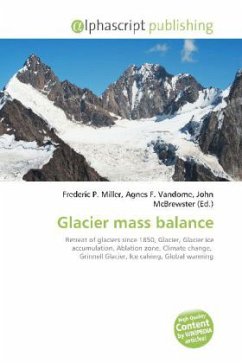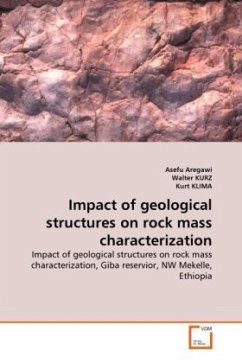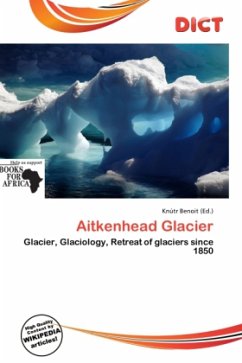
Glacier mass balance
Versandkostenfrei!
Versandfertig in 6-10 Tagen
32,99 €
inkl. MwSt.

PAYBACK Punkte
16 °P sammeln!
Please note that the content of this book primarily consists of articles available from Wikipedia or other free sources online. Crucial to the survival of a glacier is its mass balance, the difference between accumulation and ablation (melting and sublimation). Climate change may cause variations in both temperature and snowfall, causing changes in mass balance. Changes in mass balance control a glacier''s long term behavior and is the most sensitive climate indicator on a glacier. From 1980-2008 the mean cumulative mass loss of glaciers reporting mass balance to the World Glacier Monitoring S...
Please note that the content of this book primarily consists of articles available from Wikipedia or other free sources online. Crucial to the survival of a glacier is its mass balance, the difference between accumulation and ablation (melting and sublimation). Climate change may cause variations in both temperature and snowfall, causing changes in mass balance. Changes in mass balance control a glacier''s long term behavior and is the most sensitive climate indicator on a glacier. From 1980-2008 the mean cumulative mass loss of glaciers reporting mass balance to the World Glacier Monitoring Service is -12 m. This includes 19 consecutive years of negative mass balances. A glacier with a sustained negative balance is out of equilibrium and will retreat, while one with a sustained positive balance is out of equilibrium and will advance. Glacier retreat results in the loss of the low elevation region of the glacier. Since higher elevations are cooler than lower ones, the disappearance of the lowest portion of the glacier reduces overall ablation, thereby increasing mass balance and potentially reestablishing equilibrium.












